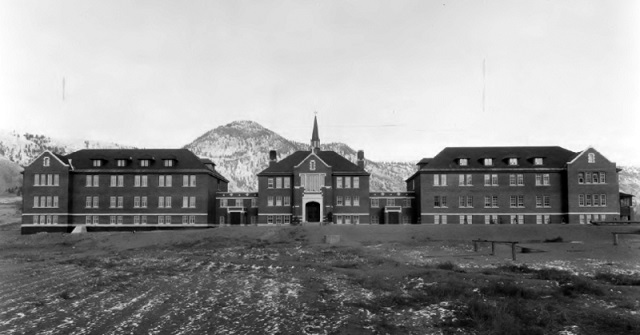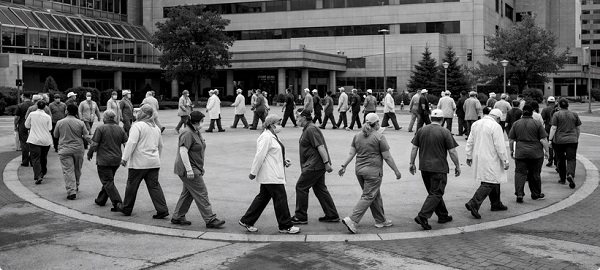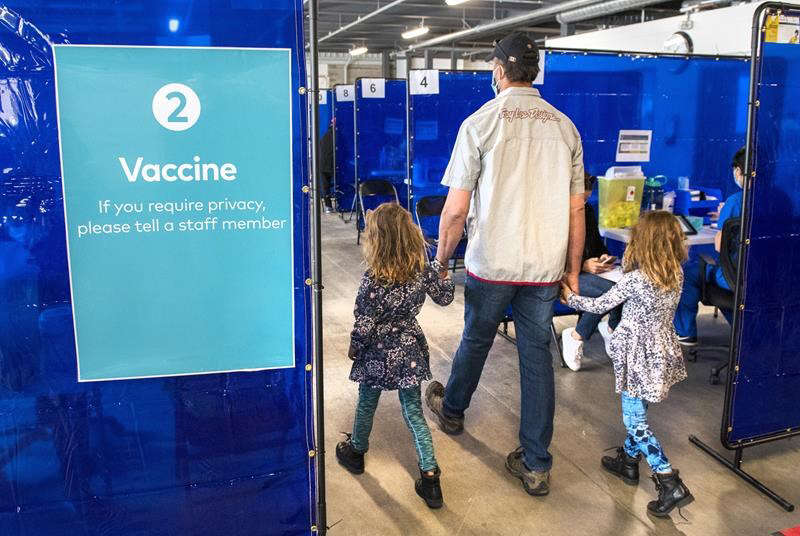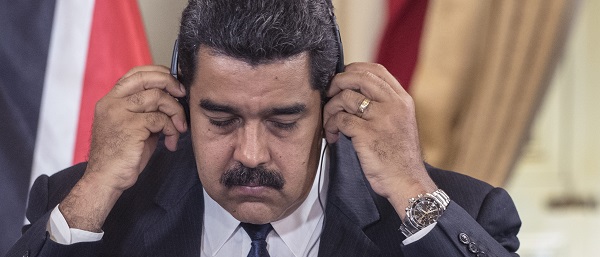Frontier Centre for Public Policy
Non-partisan think tank calling for Public Inquiry into “Kamloops Graves Hoax”

From the Frontier Centre for Public Policy
Canada Needs a Public Inquiry into the “Kamloops Graves Hoax”
Call for a public inquiry is a step towards uncovering the truth and ensuring such a national scandal never happens again
WINNIPEG, June 28, 2024 – The Frontier Centre for Public Policy is urgently calling for a public inquiry into what has become known as the “Kamloops Graves Hoax.” The May 27, 2021, claim by the Kamloops Indian Band regarding the discovery of “human remains” in the apple orchard area of the former Kamloops Indian Residential School caused national hysteria and moral panic, both domestically and internationally. However, recent admissions have revealed these claims to be false.
In a press release issued three years after the sensational claims, Chief Roseanne Casimir of the Kamloops Indian Band finally admitted that there were no “human remains,” “bodies,” “graves,” or “mass graves” found at Kamloops. What was initially reported as grave sites turned out to be mere soil anomalies, which could easily be attributed to tree roots, rocks, or remnants of prior excavations. Notably, a 1924 excavation in the same area was likely the source of the detected soil disturbances.
The 2021 claims triggered a wave of national and international reactions, including lowered flags, burned churches, and widespread media coverage. These events also prompted the ailing Pope to visit Canada, led MPs to condemn their own country as genocidal, and resulted in the enactment of costly legislation. The Canadian government allocated millions of dollars towards the search for “missing children,” who, as it turns out, never existed. The entire episode is a blemish on Canada’s history, highlighting the need for a thorough public inquiry.
Chief Casimir stated that the initial claims were based on a ground-penetrating radar (GPR) report prepared by Sarah Beaulieu, a young anthropologist from the University of the Fraser Valley. However, it is widely known that GPR can only detect soil anomalies, not graves or human remains. The actual content of Beaulieu’s report remains undisclosed, as the Kamloops Indian Band has refused to release it despite initially promising to do so. This raises serious questions about the veracity of their claims and the possibility that the band knew the information was false.
The Kamloops Indian Band applied for and received $8,000,000 from the federal government based on their false claims. Neither the band nor the federal government has provided details about the representations made to secure these funds or how the money was spent, especially given that no excavation has taken place.
The refusal of the Kamloops Indian Band to release the GPR report, coupled with the federal government’s silence on the matter, indicates a need for a thorough investigation. The Royal Canadian Mounted Police (RCMP) will not investigate unless requested by the Kamloops Band. This leaves the Canadian public in the dark about how and why millions of taxpayer dollars were spent based on a false premise.
The claims made on May 27, 2021, have caused significant disruption in Canada, damaged the nation’s reputation, and led to misleading narratives being taught in schools. It is crucial to understand how these false claims were propagated and why. A public inquiry is essential to provide clarity and accountability and to restore public trust.
The Frontier Centre for Public Policy calls for this inquiry to ensure transparency and address the grave mistakes that have been made. Canadians deserve to know the truth and to hold accountable those who have misled the nation.
About the Frontier Centre for Public Policy
The Frontier Centre for Public Policy is an independent, non-partisan think tank that conducts research and analysis on a wide range of public policy issues. Committed to promoting economic freedom, individual liberty, and responsible governance, the Centre aims to contribute to informed public debates and shape effective policies that benefit Canadians.
Frontier Centre for Public Policy
Is Canada still worth the sacrifice for immigrants?

From the Frontier Centre for Public Policy
By Lee Harding
Immigrants are beginning to question the sacrifices they made to come to Canada, signalling deeper problems facing the country
Whenever I meet someone who immigrated to Canada from a warm place, I am always remarkably impressed. The choice to deliberately leave a pleasant, warm homeland to endure our cold winters says a lot. Overall, living in Canada is apparently better, and that should make us grateful. But what should concern us is how that upside is becoming less apparent all the time.
I recall almost a decade ago sharing a meal with Filipinos. One showed me a picture of the oceanside home he left behind where he could successfully catch fish every day without leaving home. Why would he ever leave a place like that? The answer was jobs.
It’s remarkable how Filipinos can do any job with a smile and, regardless of how little it might pay, send money to their family in their country of origin. I once told a young Filipino working at a McDonald’s to keep the change from my purchase because he was sending money back to his family. He smiled with a bit of surprise that a stranger like me would know that. He also gave me back my change, just to stay honest.
Older stock Canadians used to be like Filipinos, characterized by faith, family, hard work and gratitude. I’m afraid all four aspects have eroded in mainstream Canadian culture in recent decades, especially in the past 10 years.
At my gym two years ago, I met a Sikh named Jagjeet Singh and asked him how he liked Canada. He said when he arrived in 2019, the country was paradise on earth. Now, he said, it was turning into a s___hole. My memory fails on some of his exact observations. I only recall his disdain for the Trudeau government and the NDP leader whose name sounded a lot like his own.
While immigration to Canada remains robust, some newcomers are souring on Canada for very good reasons. This is worthy of our attention.
Maclean’s has featured several stories about immigrant struggles over the past two years, including Eleanor Zhang’s. The international student started her studies at Dalhousie University in Halifax in 2016. Back then, rent was $700 a month, people were friendly, and life was good.
By 2021, she felt things had turned for the worse. The city’s population had grown by 9.1 per cent in five years. Congested traffic left drivers angry. Her friends shared stories of their cars being broken into and items stolen. Zhang’s rent was $1,670 per month, and her grocery bills had skyrocketed. For the first time, she saw people living in the park.
Zhang wanted to start her own gift shop, but commercial spaces were so expensive that she saw little room for profit. She had fallen in love with Canada but also fell out of it. Her pursuit of a prosperous life took her back to Beijing.
Canada used to be a patriotic country with robust free speech, a respectable military, strong family and moral values, an abundance of private sector jobs and quality education and health care. Today, not so much.
Some Canadians are aware of this decline and want a new direction, while others remain aloof, ignorant and insulated from the country’s erosion. Our last election offered fresh proof of the deep generational, occupational and regional divides in Canada.
The problem is, we have to build a country together. It is hard for a people so divided against itself to stand.
Like the story of Scrooge in Charles Dickens’ A Christmas Carol, this holiday season is a good time to reflect on our past, present and future. We’re not what we were, and we could get worse, but we can also get better. As Scrooge found out, it’s not too late to turn things around and lay hold of the best Canada possible.
Lee Harding is a research fellow with the Frontier Centre for Public Policy.
Business
The Real Reason Canada’s Health Care System Is Failing

From the Frontier Centre for Public Policy
By Conrad Eder
Conrad Eder supports universal health care, but not Canada’s broken version. Despite massive spending, Canadians face brutal wait times. He argues it’s time to allow private options, as other countries do, without abandoning universality.
It’s not about money. It’s about the rules shaping how Canada’s health care system works
Canada’s health care system isn’t failing because it lacks funding or public support. It’s failing because governments have tied it to restrictive rules that block private medical options used in other developed countries to deliver timely care.
Canada spends close to $400 billion a year on health care, placing it among the highest-spending countries in the Organization for Economic Co-operation and Development (OECD). Yet the system continues to struggle with some of the longest waits for care, the fewest doctors per capita and among the lowest numbers of hospital beds in the OECD. This is despite decades of spending increases, including growth of 4.5 per cent in 2023 and 5.7 per cent in 2024, according to estimates from the Canadian Institute for Health Information.
Canadians are losing confidence that government spending is the solution. In fact, many don’t even think it’s making a difference.
And who could blame them? Median health care wait times reached 30 weeks in 2024, up from 27.7 weeks in 2023, which was up from 27.4 weeks in 2022, according to annual surveys by the Fraser Institute.
Nevertheless, politicians continue to tout our universal health care system as a source of national pride and, according to national surveys, 74 per cent of Canadians agree. Yet only 56 per cent are satisfied with it. This gap reveals that while Canadians value universal health care in principle, they are frustrated with it in practice.
But it isn’t universal health care that’s the problem; it’s Canada’s uniquely restrictive version of it. In most provinces, laws restrict physicians from working simultaneously in public and private systems and prohibit private insurance for medically necessary services covered by medicare, constraints that do not exist in most other universal health care systems.
The United Kingdom, France, Germany and the Netherlands all maintain universal health care systems. Like Canada, they guarantee comprehensive insurance coverage for essential health care services. Yet they achieve better access to care than Canada, with patients seeing doctors sooner and benefiting from shorter surgical wait times.
In Germany, there are both public and private hospitals. In France, universal insurance covers procedures whether patients receive them in public hospitals or private clinics. In the Netherlands, all health insurance is private, with companies competing for customers while coverage remains guaranteed. In the United Kingdom, doctors working in public hospitals are allowed to maintain private practices.
All of these countries preserved their commitment to universal health care while allowing private alternatives to expand choice, absorb demand and deliver better access to care for everyone.
Only 26 per cent of Canadians can get same-day or next-day appointments with their family doctor, compared to 54 per cent of Dutch and 47 per cent of English patients. When specialist care is needed, 61 per cent of Canadians wait more than a month, compared to 25 per cent of Germans. For elective surgery, 90 per cent of French patients undergo procedures within four months, compared to 62 per cent of Canadians.
If other nations can deliver timely access to care while preserving universal coverage, so can Canada. Two changes, inspired by our peers, would preserve universal coverage and improve access for all.
First, allow physicians to provide services to patients in both public and private settings. This flexibility incentivizes doctors to maximize the time they spend providing patient care, expanding service capacity and reducing wait times for all patients. Those in the public system benefit from increased physician availability, as private options absorb demand that would otherwise strain public resources.
Second, permit private insurance for medically necessary services. This would allow Canadians to obtain coverage for private medical services, giving patients an affordable way to access health care options that best suit their needs. Private insurance would enable Canadians to customize their health coverage, empowering patients and supporting a more responsive health care system.
These proposals may seem radical to Canadians. They are not. They are standard practice everywhere else. And across the OECD, they coexist with universal health care. They can do the same in Canada.
Alberta has taken an important first step by allowing some physicians to work simultaneously in public and private settings through its new dual-practice model. More Canadian provinces should follow Alberta’s lead and go one step further by removing legislative barriers that prohibit private health insurance for medically necessary services. Private insurance is the natural complement to dual practice, transforming private health care from an exclusive luxury into a viable option for Canadian families.
Canadians take pride in their health care system. That pride should inspire reform, not prevent it. Canada’s health care crisis is real. It’s a crisis of self-imposed constraints preventing our universal system from functioning at the level Canadians deserve.
Policymakers can, and should, preserve universal health care in this country. But maintaining it will require a willingness to learn from those who have built systems that deliver universality and timely access to care, something Canada’s current system does not.
Conrad Eder is a policy analyst at the Frontier Centre for Public Policy.
-

 Environment15 hours ago
Environment15 hours agoLeft-wing terrorists sabotage German power plant, causing massive power outage
-

 International8 hours ago
International8 hours agoPoilievre, Carney show support for Maduro capture as NDP’s interim leader denounces it
-

 Opinion2 days ago
Opinion2 days agoHell freezes over, CTV’s fabrication of fake news and our 2026 forecast is still searching for sunshine
-

 Daily Caller14 hours ago
Daily Caller14 hours agoMinnesota Governor resigns from re-election campaign as massive government frauds revealed
-

 COVID-192 days ago
COVID-192 days agoA new study proves, yet again, that the mRNA Covid jabs should NEVER have been approved for young people.
-

 Energy15 hours ago
Energy15 hours agoTrump’s Venezuela Move: A $17 Trillion Reset of Global Geopolitics and a Pivotal Shift in US Energy Strategy
-

 International14 hours ago
International14 hours agoMaduro, wife plead not guilty in first court appearance
-

 Frontier Centre for Public Policy18 hours ago
Frontier Centre for Public Policy18 hours agoIs Canada still worth the sacrifice for immigrants?




